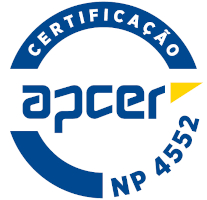2024
Applied Economics
Name: Applied Economics
Code: ECN02350L
6 ECTS
Duration: 15 weeks/156 hours
Scientific Area:
Economy
Teaching languages: Portuguese
Languages of tutoring support: Portuguese, English
Regime de Frequência: Presencial
Sustainable Development Goals
Learning Goals
The curricular unit of Applied Economics is offered in the first semester of the undergraduate program in Economics. The main aim is introducing exploratory techniques of data analysis for empirical research in Economics. Indexes, growth and structure rates, alternative measurements of location and dispersion, and correlation are examples of the topics approached in this course. Additionally, this curricular unit aims at providing not only the basis for other courses such as Statistics and Probability and Econometrics I and but also a set of techniques that may be employed in the context of empirical works in curricular units of Economic Theory.
Contents
MEASUREMENT OF THE ECONOMIC ACTIVITY:
Types of economic data
Sources of economic data
Characteristics of the empirical work in Economics
DESCRIPTIVE STATISTICS:
Definitions
Absolute and relative frequencies
Measures of location
Measures of dispersion
Skewness and kurtosis
Measures of concentration
RELATIONSHIP BETWEEN VARIABLES:
Types of relationships
Diagrams of dispersion
Covariance and correlation coefficient
Correlation tables
VARIATIONS AND RATES:
Absolut variation
Relative variation
Slope and elasticity
Structure
INDEX NUMBERS:
Index definition
Quantity, price and value indexes
Index properties
Aggregate indexes
Deflation of variables
TIME SERIES:
Decomposition of a time series
trend: moving average method
seasonality: calculating seasonal indexes
Cyclical component and irregular component
Types of economic data
Sources of economic data
Characteristics of the empirical work in Economics
DESCRIPTIVE STATISTICS:
Definitions
Absolute and relative frequencies
Measures of location
Measures of dispersion
Skewness and kurtosis
Measures of concentration
RELATIONSHIP BETWEEN VARIABLES:
Types of relationships
Diagrams of dispersion
Covariance and correlation coefficient
Correlation tables
VARIATIONS AND RATES:
Absolut variation
Relative variation
Slope and elasticity
Structure
INDEX NUMBERS:
Index definition
Quantity, price and value indexes
Index properties
Aggregate indexes
Deflation of variables
TIME SERIES:
Decomposition of a time series
trend: moving average method
seasonality: calculating seasonal indexes
Cyclical component and irregular component
Teaching Methods
Teaching is based on sessions that are both theoretical and applied. After the theoretical concepts are explained, students are invited to solve exercises that help them understand and apply the concepts. Some classes will be held at computer lab with appropriate software.
The main assessment system (with exceptions allowed in R.E.I) involves: participating in no less than 75% of the classes; written tests (at least two) during the semester, which account for 50% of the final grade; a final exam paper (remaining 50% of the grade).
The main assessment system (with exceptions allowed in R.E.I) involves: participating in no less than 75% of the classes; written tests (at least two) during the semester, which account for 50% of the final grade; a final exam paper (remaining 50% of the grade).
Teaching Staff
- Fernanda Paula Mora Peixe [responsible]





















